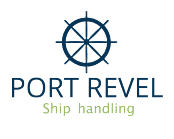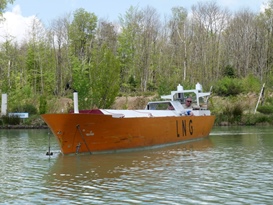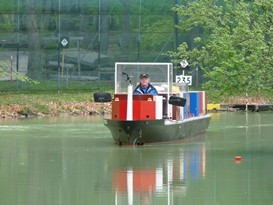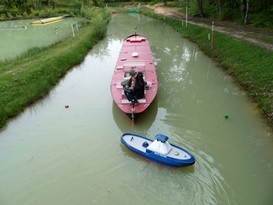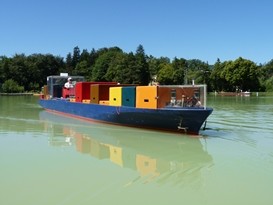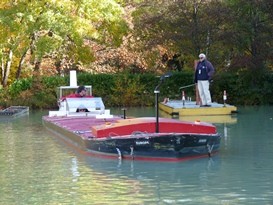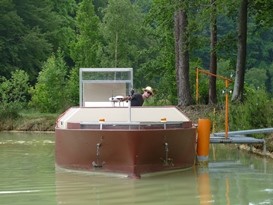All courses
Designed at the outset to help masters from the major oil companies to make the transition between known ships and the new VLCCs, the center has attracted more and more pilots over the years. Presently, 80 to 90% of all the center's trainees are pilots! "Manned Models" training provides the most realistic simulation of ship handling in confined waters. Therefore it is recommended that Marine Pilots should attend these specialized courses. Each port has different needs, however, as minimum, Marine Pilots should attend the Manned Model courses periodicaly.
Ship handling courses on manned models
The courses are given by extremely experienced instructors, all of whom are former maritime pilots.
In the course programme, classroom teaching is kept to a strict minimum of about one hour a day and a total of five hours per week. A manual is given to each participant. Classroom time is spent going over the theory required to fully understand the exercices to take place on the lake, conducting a briefing concerning these exercices and, when appropriate, a debriefing at the end of the day. This debriefing is based on the track recording taken during the day, which are reviewed in real time in the classroom, giving a opportunity for discussion and feedback sharing.
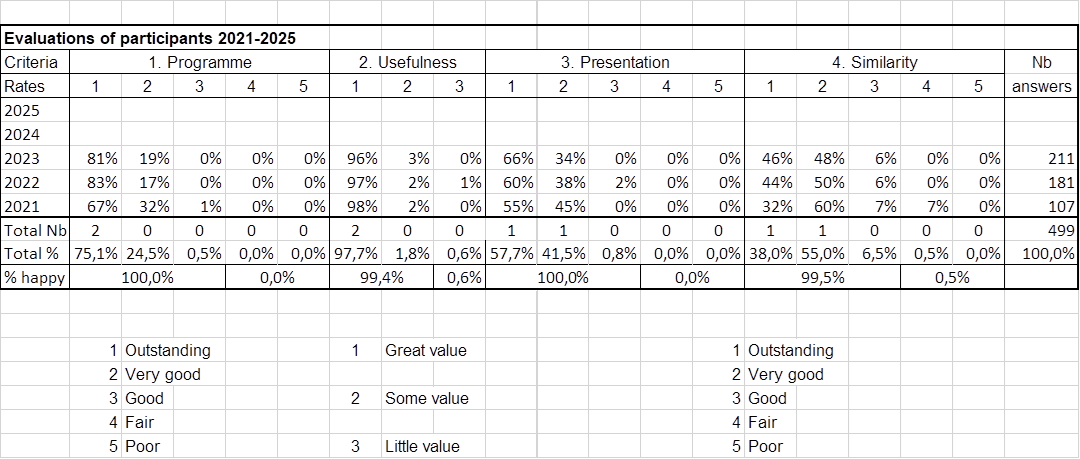
![]()
Courses
Their aim is to enable Masters and Pilots to develop and acquire new skills through a better understanding of a ship's behaviour sailing in restricted water conditions at maneuvering speed. Periodic training on scale models will maintain your ship handling skills at the highest level and periodic evaluations will show it.
- The courses last generally 5 days from Monday morning to Friday evening.
- They are run from April to the end of October each year.
- They consist of theoretical lectures (1 hour each morning) followed by practical exercises on the lake using the models.
- The centre can accommodate up to 10 participants at the same time.
- They embark on the models in pairs.
- Each student is alternately captain and chief engineer-helmsman.
- They change model and partner during the day.
- A very large number of exercices are available (around 140). This enables Port Revel to offer both basic training shiphandling courses and very specific customized courses.
Due to Froude's laws of similitude applied at Port Revel, the time scale is the square root of the linear scale, i.e. square root of 1/25 = 1/5 at the centre. After a week's training, the captains and pilots have had about 35 hours of practical ship handling. To carry out the same number of manoeuvres in real life they would need almost 175 hours!
Certificats
Training on the lake is the "raison d'être" of Port Revel. Participants sail on it for about three and a half hours in both the morning and the afternoon, making a total of seven hours per day and 35 hours per week. It should be noted that, in view of the time scale, this length of time spent on the lake corresponds to 175 hours in reality. The level of concentration required and the resulting tiredness are hence understandable.
At the end of the week each trainee receives a diploma attesting to their passage and the type of training carried out.
We fight against falsification of our certificates! Do not hesitate to contact us to check real attendance to our courses.

Our different courses
5 days course
You can choose between several courses: Pilot/Captain course, Advanced course, pod and emergency course, Cruise course, Container/ULCS course and fully customized course.
Learn more >
Fully customised course
The fully customised 5-days course can be organised, e.g. with more training with waves, berthing or anchores on any ship your choise.
Learn more >
Evaluation
At the end of each course, all participants are asked to complete a written evaluation of the course programme and the center.
Learn more >
Our main goal
Teaching and training
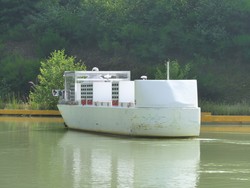
The main goal of is to provide a good balance between "Teaching" and "Training" with the emphasis placed on "Training"
Training on the scale models provides experience that could never be gained on the real ships for the simple reason that neither ship-owners nor local authorities would allow such risk to be taken.
Scale models allow the shiphandler to make mistakes.
Scale models allow experimentation on ship behavior to explore unknown fields beyond the limits of safety.
